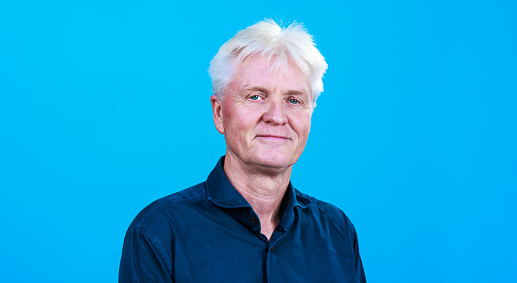Biosketch

Prof. dr. Bert Poolman
Bert Poolman was trained in bioenergetics and microbiology and is now active in biochemistry and biophysics. He has a track record in vectorial biochemistry, including metabolic energy conservation, membrane transport and cell volume regulation as well as the development of innovative technologies in membrane biology and bottom-up synthetic biology. He has advanced the field of ATP-binding cassette (ABC) and secondary active transporters by combining functional and structural studies. Central questions in the Poolman group are: (i) What tasks should a living cell minimally perform and how this can be accomplished with a minimal set of components?, (ii) How do molecules permeate biological membranes?, and (iii) How can one control the volume and physicochemistry of the cell? The main current research areas include:
• Building of synthetic cells: construction of functional far-from-equilibrium systems for metabolic energy conservation and membrane expansion.
• Cellular homeostasis: elucidation of the (transport) mechanisms that control the physicochemistry and volume of the cell.
• Structure and dynamics of the cytoplasm: understanding of the heterogeneity and spatiotemporal segregation of (macro)molecules in the bacterial cytoplasm.
Three top publications 2017-2022
1. Śmigiel WM, Mantovanelli L, Linnik DS, Punter CM, Silberberg J, Xiang L, Xu K & Poolman B (2022) Protein diffusion in Escherichia coli cytoplasm scales with the mass of the complexes and is location dependent. Science Advances 8: eabo5387; DOI: https://www.science.org/doi/10.1126/sciadv.abo5387
The dynamic structure of the bacterial cytoplasm has been analyzed by single-molecule displacement mapping. We find that protein diffusion solely depends on the mass of the protein complexes with no apparent effect of protein interactions; the dynamics of proteins is slower in the pole regions than in the nucleoid region of the cell. We provide a rationale for the deviation of the diffusion coefficients from the Einstein-Stokes equation and propose that the cytoplasm is a dilatant, non-Newtonian fluid.
2. Sikkema HR, Rheinberger J, de Boer M, Paulino C & Poolman B (2020) Gating by ionic strength and safety check by cyclic-di-AMP in the ABC transporter OpuA. Science Advances 6: eabd7697; DOI: https://www.science.org/doi/10.1126/sciadv.abd7697
The osmoregulatory ATP–binding cassette transporter OpuA restores the cell volume by accumulating large amounts of compatible solute. Here, we show by cryo-EM and functional studies how the transporter is activated by high ionic strength and how cyclic-di-AMP acts as a backstop to prevent unbridled uptake of compatible solutes and rescues cells from lysis.
3. Pols T, Sikkema HR, Gaastra BF, Frallicciardi J, Smigiel WM, Singh S & Poolman B (2019) A synthetic metabolic network for physicochemical homeostasis. Nature Communications 10: 4239; DOI: https://doi.org/10.1038/s41467-019-12287-2
A molecular system integrated into a cell-like container with control of solute fluxes and tunable supply of energy to fuel ATP-requiring processes has been constructed. ATP production is maintained away from equilibrium by control of energy dissipation. This is one of the most advanced functional reconstitutions of a chemically defined network ever achieved, which provides the basis for the design of complex life-like systems for cell growth and division.
| Last modified: | 26 October 2023 4.35 p.m. |
